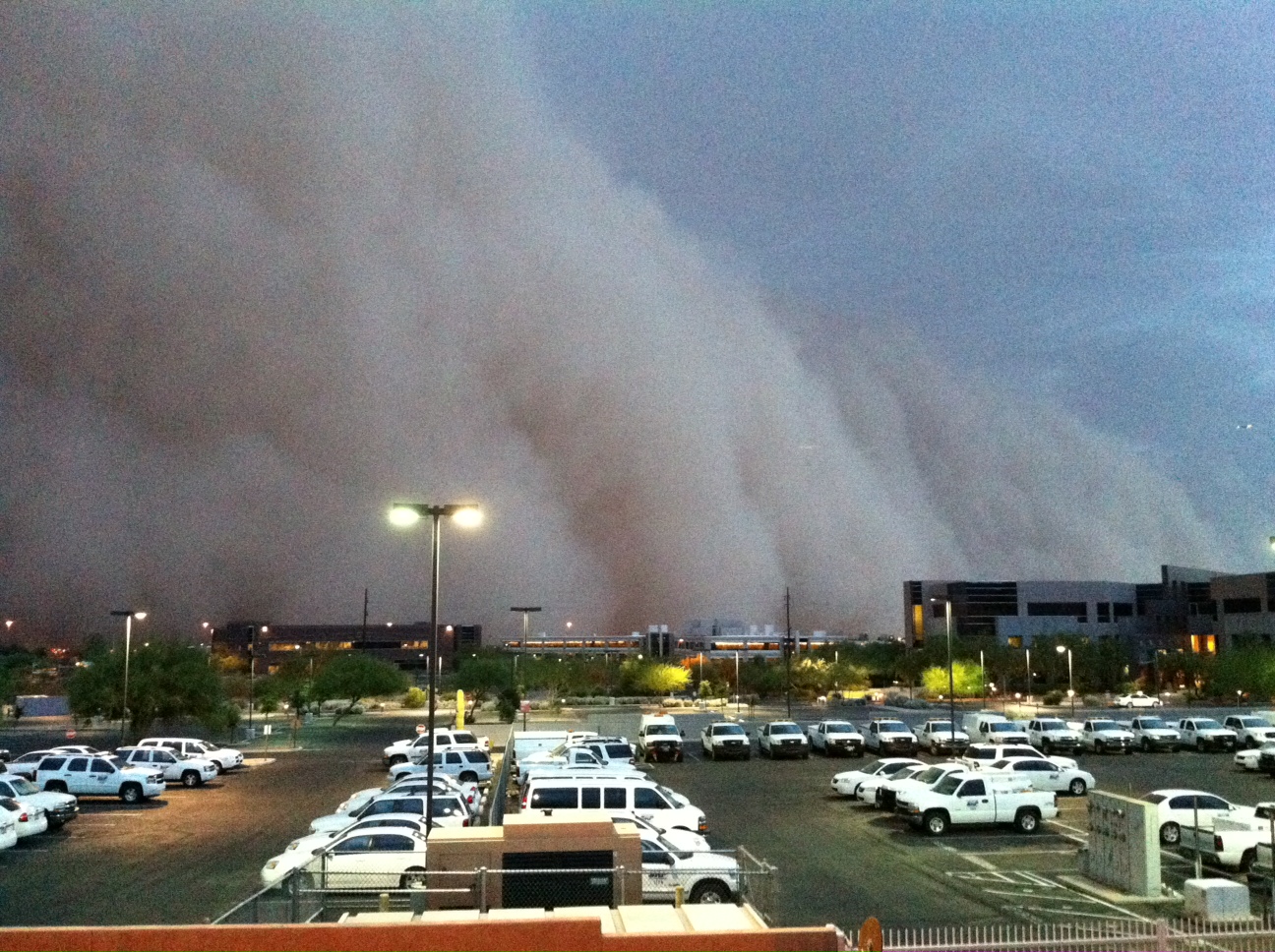
Haboob Hubbub: The Science of the Monster Phoenix Dust Storm

The massive dust storm that swept through Phoenix, Ariz., last night (July 5), reducing visibility to near zero and delaying flights, was a whopper, meteorologists said.
The dust storm is what's called a a haboob (Arabic for "strong wind"). In the United States, haboobs are common in Arizona, Texas and New Mexico. But yesterday's haboob was more like something you'd see in the Middle East or other arid regions around the world, said Ken Waters, the warning coordination meteorologist with the National Weather Service (NWS) in Phoenix.
"It was mind-boggling, just absolutely amazing," Waters told OurAmazingPlanet. "I've been a meteorologist for years and I've not seen a wall of dust like that."
Waters estimated that the storm was up to 5,000 feet (1,500 meters) tall as it hit Phoenix. The haboob was more like a block of dust with a 100-mile-long (161 kilometers) wall on the leading edge. The dust storm was moving at speeds up of to 50 mph (80 kph) and traveled between 150 to 200 miles (241 to 322 km) from Tucson to Phoenix. [Related: The World's Weirdest Weather]
A haboob forms after a severe thunderstorm collapses. Rain-cooled air from the thunderstorm plummets to the ground at speeds up to 100 mph (161 kph), and with so much momentum that it can't go into the ground, Waters said.
Instead, the winds kick up an enormous amount of dry, loose sand, which ripples outward.
"It's like the power of a tornado, but a different kind of phenomenon," Waters said.
Sign up for the Live Science daily newsletter now
Get the world’s most fascinating discoveries delivered straight to your inbox.
Like most of the drought-stricken Southwest, Arizona hasn't had rain in months, so the sand was especially loose before last night's storm.
Arizona has dust storms every year, especially along the Interstate 10 corridor from Phoenix to Tucson, during the summer monsoon season when thunderstorms are common.Five people on average are killed each year during dust storms, typically due to blinding conditions on the highway, according to the Arizona Department of Transportation.
Last night's haboob reduced visibility to between 5 feet and near zero (less than 1.5 m), Waters said. Trees and power lines were knocked down, but no injuries have been reported.










